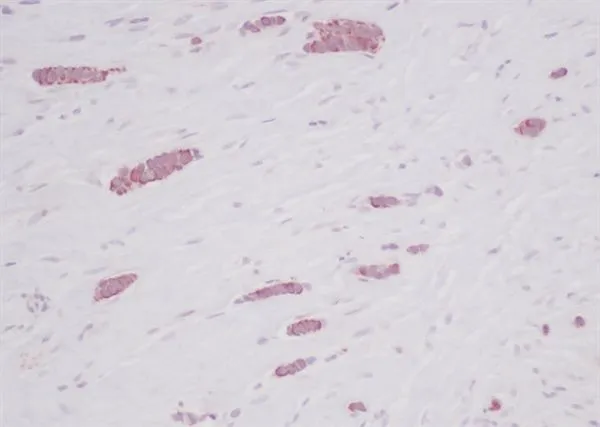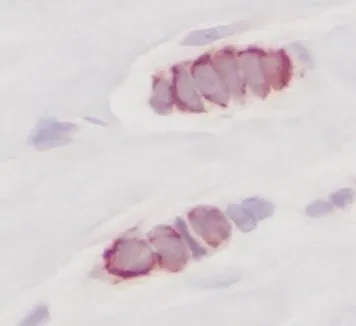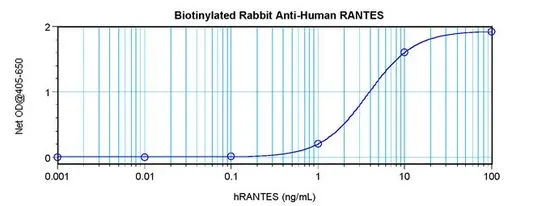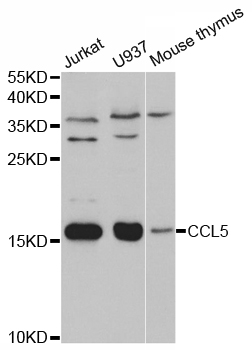
IHC-P analysis of human breast invasive ductal carcinoma using GTX27314 RANTES antibody. Heat mediated antigen retrieval using citrate buffer pH6.0.
RANTES antibody
GTX27314
ApplicationsFunctional Assay, Western Blot, ELISA, ImmunoHistoChemistry, ImmunoHistoChemistry Paraffin
Product group Antibodies
TargetCCL5
Overview
- SupplierGeneTex
- Product NameRANTES antibody
- Delivery Days Customer9
- Application Supplier NoteWB: 0.1-0.2microg/ml. ELISA: 0.5-2microg/ml. *Optimal dilutions/concentrations should be determined by the researcher.Not tested in other applications.
- ApplicationsFunctional Assay, Western Blot, ELISA, ImmunoHistoChemistry, ImmunoHistoChemistry Paraffin
- CertificationResearch Use Only
- ClonalityPolyclonal
- Concentration1 mg/ml
- ConjugateUnconjugated
- Gene ID6352
- Target nameCCL5
- Target descriptionC-C motif chemokine ligand 5
- Target synonymsD17S136E, RANTES, SCYA5, SIS-delta, SISd, TCP228, eoCP, C-C motif chemokine 5, T-cell specific protein p288, beta-chemokine RANTES, chemokine (C-C motif) ligand 5, eosinophil chemotactic cytokine, regulated upon activation, normally T-expressed, and presumably secreted, small inducible cytokine subfamily A (Cys-Cys), member 5
- HostRabbit
- IsotypeIgG
- Protein IDP13501
- Protein NameC-C motif chemokine 5
- Scientific DescriptionThis gene is one of several chemokine genes clustered on the q-arm of chromosome 17. Chemokines form a superfamily of secreted proteins involved in immunoregulatory and inflammatory processes. The superfamily is divided into four subfamilies based on the arrangement of the N-terminal cysteine residues of the mature peptide. This chemokine, a member of the CC subfamily, functions as a chemoattractant for blood monocytes, memory T helper cells and eosinophils. It causes the release of histamine from basophils and activates eosinophils. This cytokine is one of the major HIV-suppressive factors produced by CD8+ cells. It functions as one of the natural ligands for the chemokine receptor chemokine (C-C motif) receptor 5 (CCR5), and it suppresses in vitro replication of the R5 strains of HIV-1, which use CCR5 as a coreceptor. Alternative splicing results in multiple transcript variants that encode different isoforms. [provided by RefSeq, Jul 2013]
- Storage Instruction-20°C or -80°C,2°C to 8°C
- UNSPSC12352203



